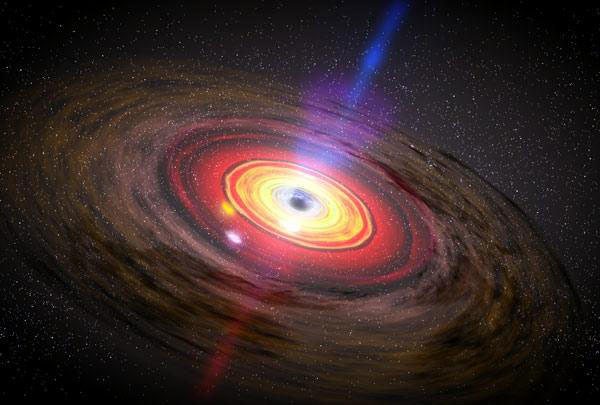Astrophysicists captured a black hole in the act of gobbling up a star, the first observation of its kind.

Black holes are immensely dense areas in space where gravity pulls everything inside — not even light can escape. And while astronomers have known the existence of black holes for some time (the first confirmation was made in part from the David Dunlap Observatory in Richmond Hill, Ontario), they have never seen one eating a star.
READ MORE: Discovery of monster black hole challenges scientific theory
“These events are extremely rare,” van Velzen said. “It’s the first time we see everything from the stellar destruction followed by the launch of a conical outflow, also called a jet, and we watched it unfold over several months.”
The supermassive black hole — which is on the “lighter” end of the scale of these types of black holes — is in a galaxy about 300 million light years from our own and is believed to be about a million times the mass of our sun.
The finding supports the theory that when supermassive black holes consume large volumes of gas — such as a star — a jet of plasma will be ejected along the rim of the black hole, called the event horizon.
WATCH: How a black hole devours a star (NASA)
Astronomers first spotted the star, which is about the same size as our own sun — being ripped apart in December 2014 by a team from Ohio State University using an optical telescope in Hawaii. Further study was conducted by an international team, including astrophysicists from Johns Hopkins University, using a radio telescope.
The astrophysicists were able to observe the dining using optical, x-ray and radio signals.
Our own galaxy harbours a supermassive black hole, known as Sagittarius A*, that is about 4.5 million times the mass of our sun.


Comments